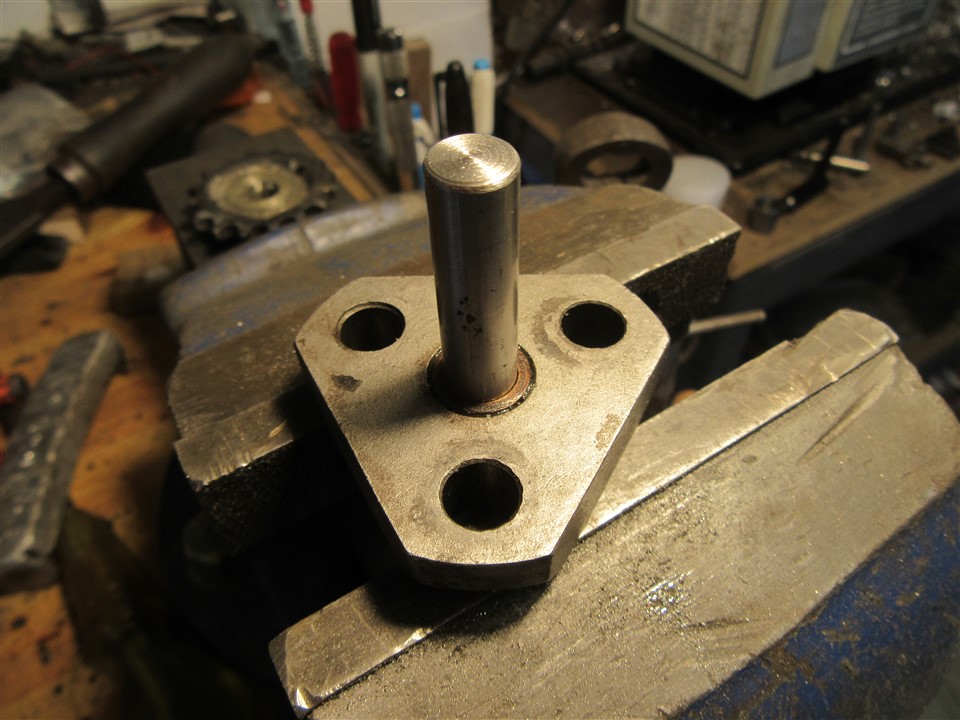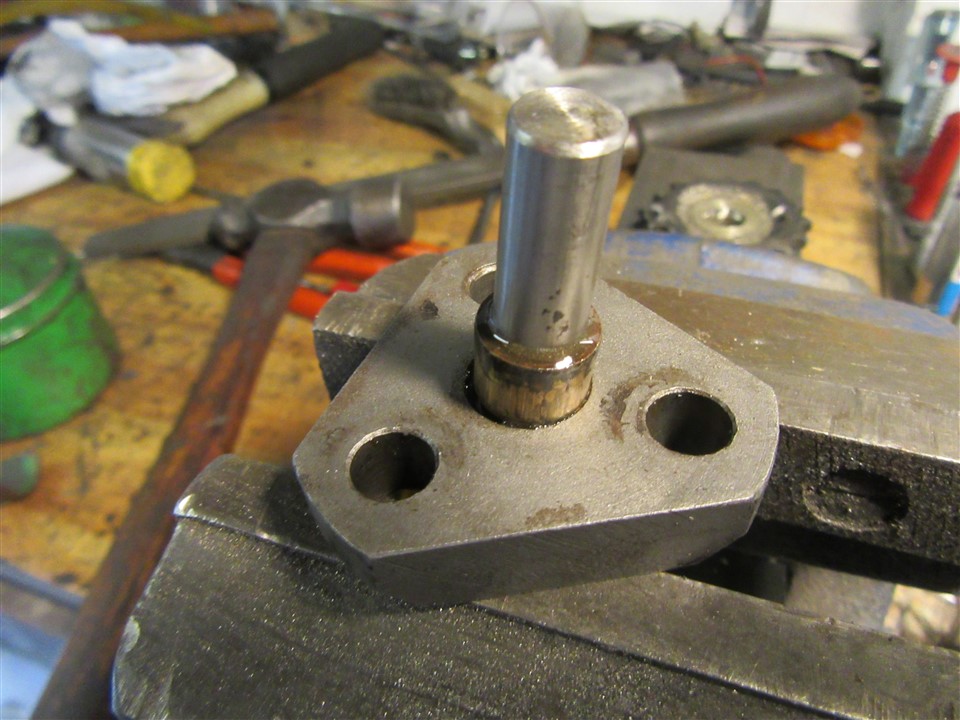I've often seen a technique for removing bushes from blind holes involving a well-fitting bar and oil. The drill is to select a round bar that is a close fit in the bush, fill the blind end with oil then a sharp tap on the end of the bar will force the bush out with hydraulic pressure.
I've always had my doubts but being faced with this problem for my Electra's starter assembly I thought I'd try it out. A short length of 3/8" round stainless faced off and slightly chamfered in the lathe, some 40 grade oil and off I went.
To my surprise and delight it worked perfectly! It did need slightly more than a light tap to start it but then the bush popped out very nicely.
Before removal:

In progress:

I'm amazed, it's never…
I'm amazed, it's never worked for me.. usually I'm trying to get a bush out of an aluminium casing and I'm loathe to hit it hard enough to dislodge it. I resort to tapping a thread as far into the bush as possible, screwing in a suitable bolt or threaded bar then using one of those slide hammers to get it out. Next opportunity I'll try your hydraulic method again.
- Log in to post comments
In this case...
... I needed to get the bush out undamaged as the NOC component is supplied bare so I needed to reuse the bush. Of course I could have made a new one but as I'm waiting for other parts thought I'd give this a try. It may be that the bush was quite a slack fit in the housing, and of course it's only small.
- Log in to post comments
I use grease instead of oil …
I use grease instead of oil - it works better on a bush that is too tight for oil.
- Log in to post comments
There are stories of less…
There are stories of less robust castings (gearbox?) exploding under pressure. So a Dremel might be safer if in any doubt
- Log in to post comments
I did consider grease....
... but thought it would be hard to eliminate air pockets which would easily compress. There was surprisingly little oil leakage around the sides as seen in the second pic.
- Log in to post comments




I've often read about that method but never been successful when I've tried it myself.
So nice to know it works and well done for reporting back and with photos!